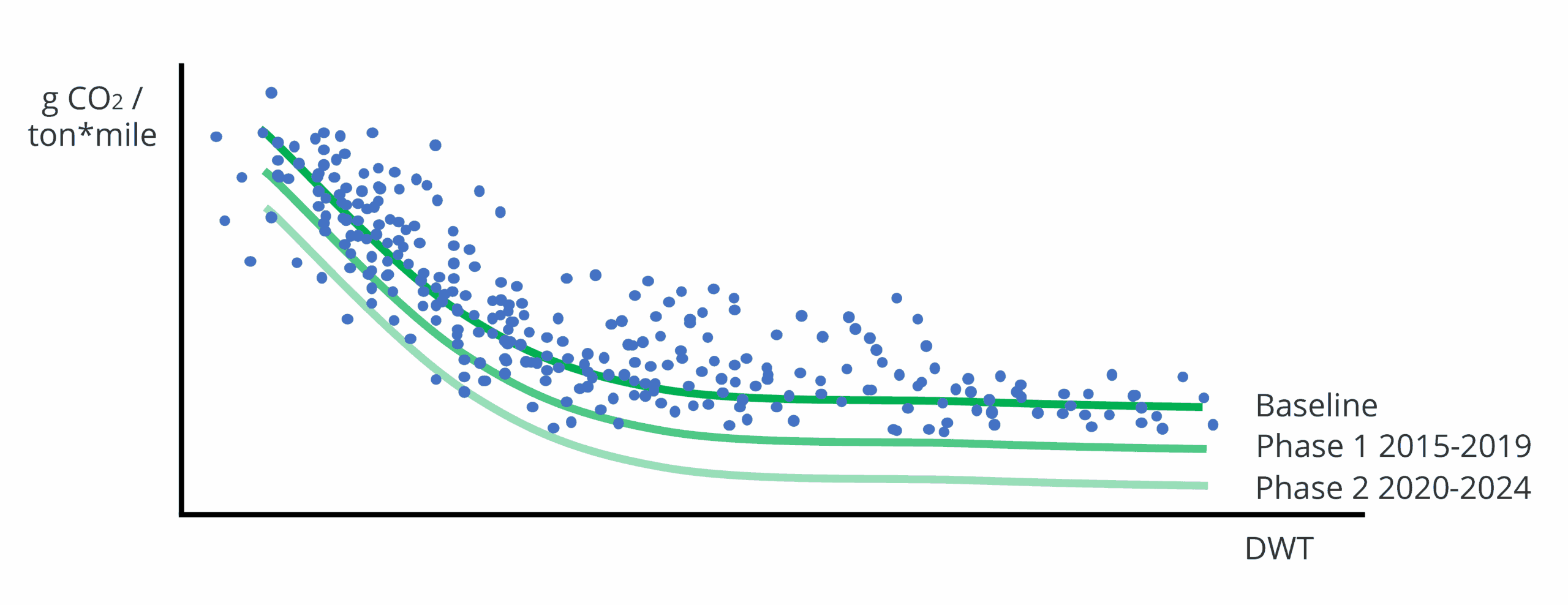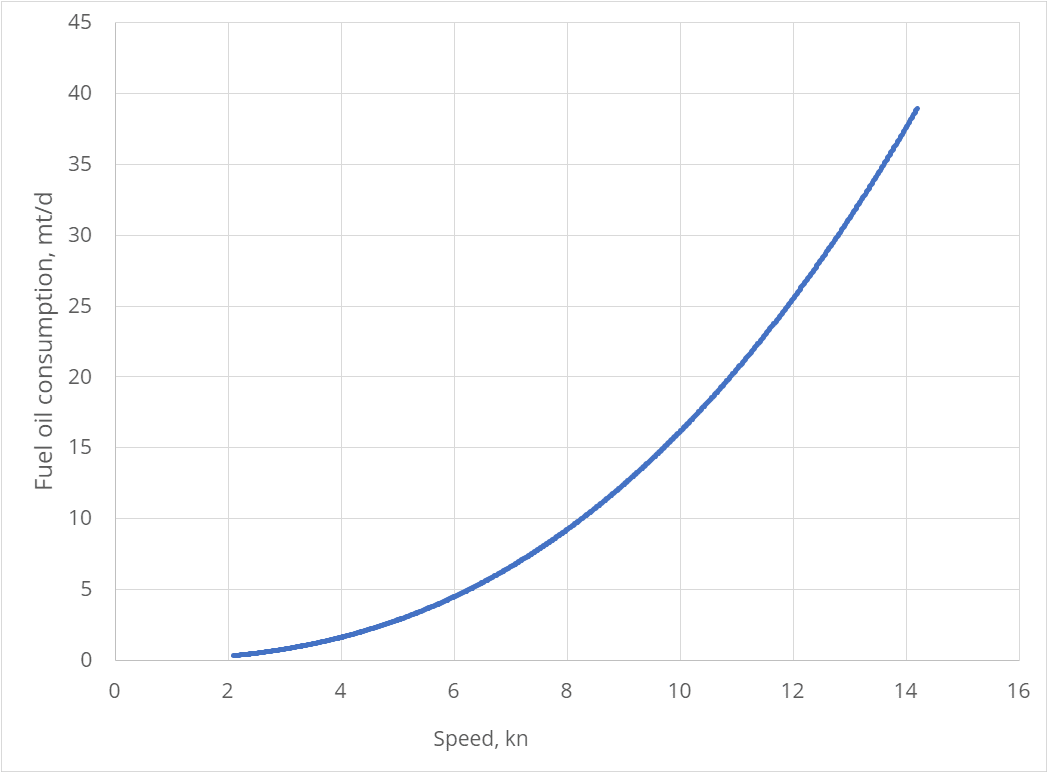September 15, 2021
The basics of EEXI – from 2023, all existing ships must meet new energy efficiency standards
by Ossi Mettälä, Customer Success Manager, NAPA Shipping Solutions
In June 2021, new amendments were adopted to the International Maritime Organization’s (IMO’s) MARPOL convention in the Marine Environment Protection Committee (MEPC). The additions included new energy efficiency requirements – Energy Efficiency Existing Ship Index (EEXI) and Carbon Intensity Indicator (CII). These are part of the global measures to reduce greenhouse gas (GHG) emissions from shipping.
In this blog, I will introduce the basics of EEXI.
What is EEXI?
The EEXI measures CO2 emissions per transport work, purely considering the ship’s design parameters. EEXI does not require any measurement or reporting of true CO2 emissions while the ship is in operation. EEXI is the sister to EEDI, Energy Efficiency Design Index, which has been in force since 2013. These indexes measure the same in practice; however, EEDI is applied to new ships while EEXI applies to existing vessels. EEXI regulation is one of the most significant measures by the IMO to promote more environmentally friendly technologies and reduce the shipping industry’s carbon footprint.

As EEXI and EEDI aim to improve the global fleet’s energy efficiency, there is a maximum threshold level that the index must fall below. The reference line forming the requirement level was implemented in 2013, with the requirement getting stricter every 5 years (from 2015). The baselines were created for every ship type separately using regression analysis of operation data. Currently, any new ships operating in international waters, with a gross tonnage over 400, must meet EEDI Phase 2 requirements. In most vessel types and sizes, this is 20% below the original EEDI reference line. So, any new vessels built are increasingly energy-efficient over time.

However, ships are built to operate for decades to come. Therefore, meeting the ambitious emissions reduction targets set for shipping requires the existing fleet to become more energy efficient. This is where EEXI comes into play. From 2023, practically all existing ships must fall below a certain limit of CO2 emissions per cargo capacity. Since the energy efficiency requirements have become stricter over time, most of the older existing global fleet will not meet the new EEXI requirements. Simpson Spence Young estimates that less than 25% of bulkers and tankers comply.
How to comply?
The easiest way to get the energy efficiency index down is to reduce engine power, as vessels’ fuel consumption and emissions, respectively, increase as speed increases. The propulsion power, thus CO2 emissions, is approximately proportional to the cube of the speed. This means that reducing speed by 20% can drop the emitted CO2 by 50%. Slow steaming, therefore, is a more carbon-efficient way to transport goods. The engine power limitation systems can be bypassed, but only if required for the safe operation of the ship, for example, in harsh weather conditions.
Other solutions to reduce EEXI include retrofitting clean technologies, such as batteries, waste heat recovery systems, air lubrication technology, wind-assisted propulsion, or using low or zero-carbon fuels. The impact these solutions have on improving energy efficiency may not be enough on their own to comply with EEXI; therefore, some engine power limitation is likely to be required in most cases. However, options to retrofit energy-saving equipment may not be financially feasible for most owners and operators, especially for older vessels.

How does EEXI impact the maritime industry?
From a technical perspective, all ship owners and shipbuilding stakeholders must consider and assess how they will support compliance with EEXI. Is it feasible to retrofit clean technologies? Is the payback time going to be short enough? Are clean technologies becoming more affordable through increased interest and investments in the market? Depending on the vessel age and prospects, some owners and operators may even be scrapping vessels earlier than envisioned.
From a commercial perspective, new regulations bring unique uncertainties that are set to shake the status quo. Charterers are already hesitating to make long-term agreements lasting beyond 2023, which increases pressure on ship owners to decrease freight rates to get deals. Odd price fluctuations in freight rates and fuel prices are to be expected as different players “bet on different horses.” Currently, everyone from ship owners to charterers, brokers, shipyards, and consultants are feverishly trying to figure out how the new regulations will impact business. Is it time to sell, invest, or wait?
However, the climate is the biggest beneficiary. Regulating the energy efficiency of new vessels solely through EEDI is just too slow to impact total emissions because the global fleet renewal rate is so gradual. Likewise, an increasing regulatory demand for new ships to be energy efficient might even slow down interest in renewing the existing global fleet. Having existing and new ships under similar regulations evens out the playing field.
Along with the EEXI regulation, the Carbon Intensity Indicator (CII) is coming to force in 2023. This indicator considers the actual CO2 emissions in ship operations. Together, CII and EEXI will significantly incentivize shipping to find and fight inefficiencies.
NAPA solutions supporting compliance
The solutions to successfully complying with EEXI and CII are complex but ultimately come back to the same conclusion; the sooner fleets can begin using the tools currently available to save fuel and operate more efficiently, the easier the transitions over the next few years will be.
NAPA Voyage Optimization is an easy-to-use solution for improving operational efficiency by optimizing route and speed profiles for any sea passage. As part of NAPA Fleet Intelligence, NAPA Voyage Optimization runs in a web browser without the need for any additional hardware installations or initial investment. NAPA Fleet Intelligence has the tools for monitoring vessel’s technical performance to keep track of hull fouling status and avoid extra fuel consumption and emissions.
Overall, we at NAPA are at your support on your fleet’s decarbonization journey – from design to operation; NAPA has the tools you need to adjust to the new regulations. Get in touch to find out more!
This blog post was originally published on LinkedIn on September 14, 2021.